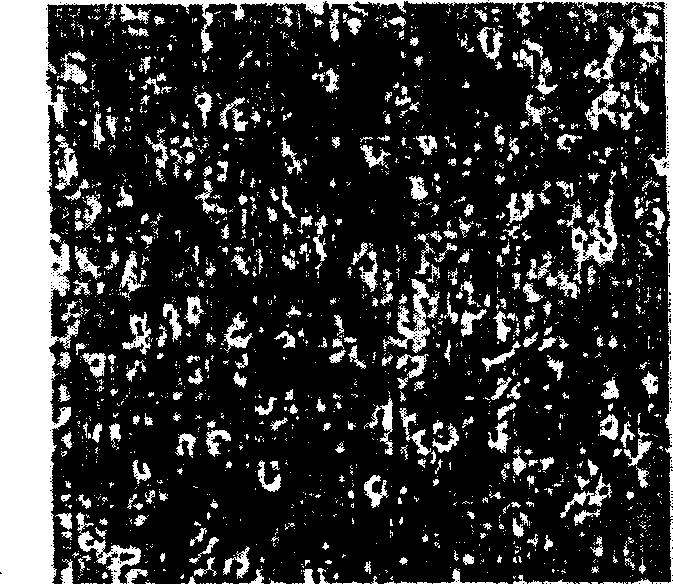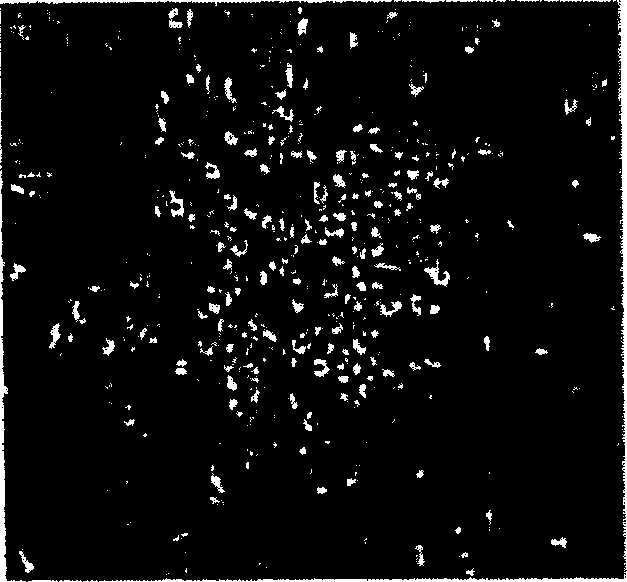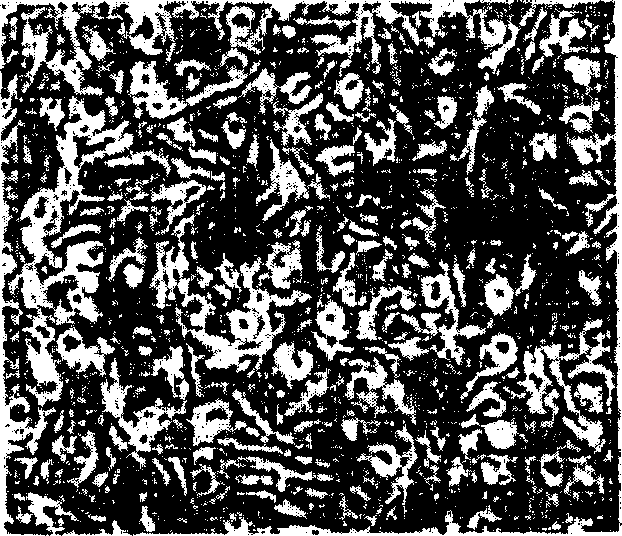Method of isolating and culturing mesenchymal stem cell derived from umbilical cord blood
A mesenchymal stem cell and umbilical cord blood technology, applied in the field of isolation and culture of mesenchymal stem cells, can solve the problems of cell loss and difficulty in culturing stem cells
- Summary
- Abstract
- Description
- Claims
- Application Information
AI Technical Summary
Problems solved by technology
Method used
Image
Examples
Embodiment 1
[0021] Example 1: Isolation and culture of mesenchymal stem cells
[0022] To isolate mononuclear cells from cord blood, the cord blood was diluted with 2 volumes of αMEM (α-minimum essential medium, Jeil Biotech Services, Korea), transferred to a 50 ml Falcon tube, and centrifuged at 300×g for 10 min at room temperature . The separated buffycoat layer was collected, diluted with 2 times the volume of αMEM, covered on Ficoll-Hypaque, and centrifuged at 300xg for 30min at room temperature.
[0023] Ficoll-Hypaque is a polymer of Ficoll (sucrose polymer) and Hypaque (sodium ditrizoate), which is widely used to isolate monocytes from blood. The specific gravity of Ficoll-Hypaque is 1.077g / ml, which is heavier than monocytes but lighter than red blood cells, so monocytes and red blood cells can be separated according to their different specific gravity. That is, if blood is placed on Ficoll-Hypaque and centrifuged, monocytes will accumulate on Ficoll-Hypaque.
[0024] Mononucle...
Embodiment 2
[0028] Example 2: Characterization of Cell Surface Antigens of Cultured Mesenchymal Stem Cells
[0029] In order to determine the characteristics of the cell surface antigens of the above-mentioned isolated and cultured spindle-shaped mesenchymal stem cells, the cell surface antigens were analyzed by FACS. The results are shown in Table 1. By attaching luminescent immunoantigen indicators to the surface of cells of interest, FACS (fluorescence-activated cell sorting; a type of flow cytometry) can analyze the characteristics of cells of interest, or can isolate only cells with Cells for specific antigen indicators.
[0030] indicator
[0031] Table 1 confirms that for stem cells isolated and cultured according to the present invention, CD34, CD45 and CD14 (characteristic indicators of hematopoietic stem cells) are negative, and SH2, SH3, CD29 and CD44 (characteristic indicators of mesenchymal stem cells ) was positive, while CD166 was weakly positive. The interpret...
Embodiment 3
[0032] Example 3: Comparing the success rate of mesenchymal stem cell culture
[0033] 50 units of umbilical cord blood were cultured according to the conventional method and the method of the present invention, and the success rate of cell culture was compared between the two. The results are shown in Table 2 below.
[0034]Specifically, in conventional methods, cord blood is used for stem cell culture, in which no standard is set for the amount of cord blood used nor the time from delivery to collection. In addition, no cell growth factor is added to the culture medium of the conventional method, except that, the separation process of the cells adopted is similar to the method of the present invention.
[0035] routine
[0036] It can be seen from the above Table 2 that by comparing the success rate of mesenchymal stem cell culture, it is found that the success rate of the conventional method is 2%, while the present invention has a high success rate of 98%.
PUM
 Login to View More
Login to View More Abstract
Description
Claims
Application Information
 Login to View More
Login to View More - R&D
- Intellectual Property
- Life Sciences
- Materials
- Tech Scout
- Unparalleled Data Quality
- Higher Quality Content
- 60% Fewer Hallucinations
Browse by: Latest US Patents, China's latest patents, Technical Efficacy Thesaurus, Application Domain, Technology Topic, Popular Technical Reports.
© 2025 PatSnap. All rights reserved.Legal|Privacy policy|Modern Slavery Act Transparency Statement|Sitemap|About US| Contact US: help@patsnap.com



